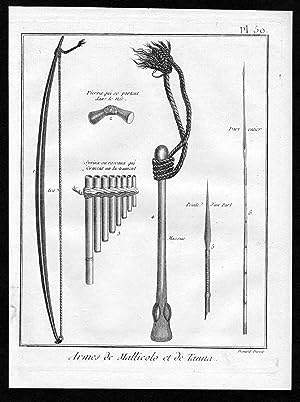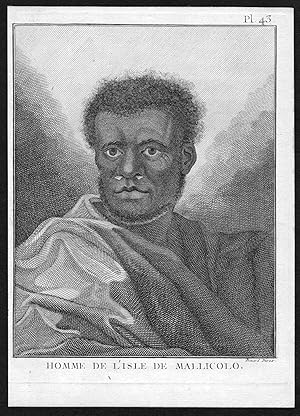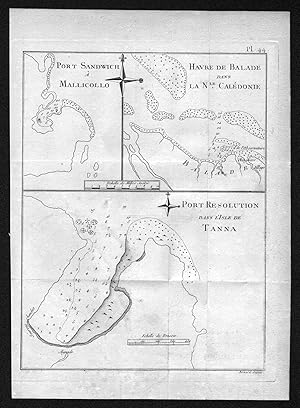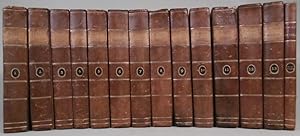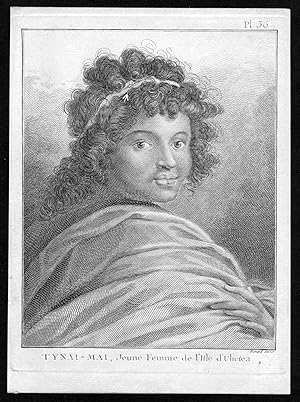james cook, endeavour (79 Ergebnisse)
Produktart
- Alle Produktarten
- Bücher (57)
- Magazine & Zeitschriften
- Comics
- Noten
- Kunst, Grafik & Poster (11)
- Fotografien
- Karten (11)
-
Manuskripte &
Papierantiquitäten
Zustand
Einband
Weitere Eigenschaften
Gratisversand
Land des Verkäufers
Verkäuferbewertung
-
King George's Bark "Endeavour"
Verlag: Whitby Literary & Philosophical Society, 1997
ISBN 10: 0902074121ISBN 13: 9780902074125
Anbieter: WorldofBooks, Goring-By-Sea, WS, Vereinigtes Königreich
Buch
Paperback. Zustand: Very Good. The book has been read, but is in excellent condition. Pages are intact and not marred by notes or highlighting. The spine remains undamaged.
-
THE JOURNAL OF H.M.S. ENDEAVOUR
Verlag: GENESIS, 1977
Anbieter: Vagabond Books, A.B.A.A., PASADENA, CA, USA
Buch Erstausgabe
Hardcover. Zustand: Fine. First Edition. LIMITED EDITION FINE IN SLIPCASE. #344 OF 500 COOK, James. The Journal of H.M.S. Endeavour 1768-1771, Guildford: Genesis Publications Limited, 1977. 4°, preface by the Earl Mountbatten of Burma, 40 plates, 6 coloured, facsimile manuscript, original red morocco gilt by Zaehnsdorf, galleon motif stamped in gilt on upper cover, spine gilt in compartments, blue watered-silk liners, g.e., red cloth box. LIMITED TO 500.
-
Gezigt van de Rivier Endeavour op de Kust van Nieuw-Holland.
Erscheinungsdatum: 1798
Anbieter: Antiquariaat Dat Narrenschip, Middelburg, Niederlande
Karte
No Binding. Zustand: Good. Antique print of the Endeavor River. Title below the picture. Backside blank. With folds as issued. Copper engraving by Ignaz Sebastian Klauber. Published in 1798 by Honkoop in Leiden and Allart in Amsterdam in 'Reize rondom de waereld,' James Cook. Dimensions (image incl. text): 22 x 34 cm.
-
Giornali di bordo nei viaggi d'esplorazione. Primo volume. Il viaggio dell' "Endeavour" 1768 - 1771.
Erscheinungsdatum: 1971
Anbieter: Libreria Piani, Monte San Pietro, BO, Italien
Buch
Milano, Longanesi, 1971, 8vo (cm 23 x 15,5) tutta tela editoriale con fregi e titoli dorati al piatto anteriore e al dorso, sovraccoperta illustrata a colori (un piccolo strappo), pp. 459 con una tavola fotografica a colori in antiporta (ritratto di Cook su medaglione, tratto da un disegno di John Flaxman), 11 cartine in nero nel testo e 25 tavole in nero e a colori fuori testo. A cura di J.C. Beaglehole. Con un saggio introduttivo di Franco Marenco. Traduzione di Ferdinanda Invrea e Flavia Marenco (I Cento Viaggi, 13). In ottimo stato.
-
A Journal of a Voyage Round the World in H.M.S. Endeavour 1768-1771
Verlag: Amsterdam/New York : N. Israel/Da Capo Press, 1967
Anbieter: Klondyke, Almere, Niederlande
Buch
Zustand: Good. Original leatherette binding, transperent dust jacket, 130,(3)p., large 8vo. Bibliotheca Australiana #14. Facsimile of the 1771 edition.
-
Mond van de Endeavour Rivier in Nieuw Zuid Wales; Botanie Baai in Nieuw Zuid Wales
Verlag: Honkoop, Allart, Van Cleef c. 1795, Leyden, Amsterdam, The Hague, 1795
Anbieter: Alexandre Antique Prints, Maps & Books, Toronto, ON, Kanada
Karte
Zustand: Very Good. Two detail maps of the entrance of the Endeavour River and Botany Bay on Australia's east coast visited by James Cook in 1770., Size : 170x355 (mm), 6.75x14 (Inches), Black & White.
-
Chart of Part of the Coast of New South Wales from Cape Tribulation to Endeavour Strait
Verlag: London, 1770
Anbieter: Antipodean Books, Maps & Prints, ABAA, Garrison, NY, USA
Copper engraved map, original folds, lt. browning on the center fold from the tab, 34x30 cm. The first printed map to concentrate on a section of Australia's east coast, from the lst edition of Cook's Voyages.
-
Chart of Part of the Coast of New South Wales from Cape Tribulation to Endeavour Straits. By Lieut. J. Cook, 1770
Verlag: London, 1770
Anbieter: Antipodean Books, Maps & Prints, ABAA, Garrison, NY, USA
Erstausgabe
The first printed map to concentrate on a section of Australia's east coast, from the 1st edition of Cook's Voyages. Shows the Queensland coast from Cape Tribulation to the Endeavour Straits, with the ship's track. Copper engraved map, 34x30 cm. Original folds, very lt. browning on the center fold from the tab, a very nice copy.
-
First Voyage round the World : CAPTAIN COOK'S JOURNAL DURING HIS FIRST VOYAGE ROUND THE WORLD MADE IN H.M. BARK "ENDEAVOUR" 1768-71
Verlag: Outlook Verlag Nov 2022, 2022
ISBN 10: 3368407783ISBN 13: 9783368407780
Anbieter: AHA-BUCH GmbH, Einbeck, Deutschland
Buch
Taschenbuch. Zustand: Neu. Neuware - Unveränderter Nachdruck der Originalausgabe.
-
Kaart van een gedeelte van de Kust van Nieuw Zuid Wales, van kwelling Kaap tot de Endeavour-Straat. door Luit: J.Cook 1770.
Erscheinungsdatum: 1797
Anbieter: Antiquariaat Dat Narrenschip, Middelburg, Niederlande
Karte
No Binding. Zustand: Fine. The famous map of Australia's east coast showing the labyrinth where Endeavor ran onto a reef while crossing the Great Barrier Reef. Backside blank. With folds as issued. Wide margins. Hand-coloured copper engraving by C. van Baarsel. Published in 1797 or shortly afterwards by Honkoop in Leiden and Allart in Amsterdam in "Reize rond de waereld," James Cook. Dimensions (image): 29 x 33 cm.
-
Captain Cook`s Journal during his First Voyage round the World, made in H.M. Bark Endeavour, 1768 71: A Literal Transcription of the Original MSS (Cambridge Library Collection - Maritime Exploration)
Verlag: Cambridge University Press, 2014
ISBN 10: 1108070507ISBN 13: 9781108070508
Anbieter: Buchpark, Trebbin, Deutschland
Buch
Zustand: Gut. 1. 480 Seiten Gebrauchs- und Lagerspuren. Außen: Klebereste / Klebespuren. 24584659/3 Altersfreigabe FSK ab 0 Jahre Taschenbuch, Größe: 17.8 x 2.5 x 25.4 cm.
Mehr Angebote von anderen Verkäufern bei ZVAB
Neu ab EUR 85,44
Gebraucht ab EUR 24,07
Mehr entdecken Softcover Erstausgabe
-
[Map of New Zealand]. Kaart van Nieuw Zeeland in de Jaaren 1769 en 1770 bezogt door den Luitenant J. Cook met het Schip de Endeavour.
Anbieter: Antiquariaat A. Kok & Zn. B.V., Amsterdam, Niederlande
Original 18th century copper-engraved map of New Zealand in black and white [image size including outline: 47 x 37 cm. / size incl. margins: 53 x 41 cm.]. published by: Honkoop, Allart en van Cleef, (Leiden, Amsterdam & 's-Gravenhage), 1795. - minimally soiled / foxed, small (but skillfull) repair affecting the backside of the image, with some folds as issued. Profesionally matted under acid-free cardboard. * One of the earliest and most decorative maps of New Zealand.
-
An Account of a Voyage Round the World with a Full Account of the Voyage of the Endeavour in the year MDCCLXX along the East Coast of Australia by Lieutenant James Cook.
Verlag: Smith & Paterson, Brisbane, 1969
Anbieter: Antipodean Books, Maps & Prints, ABAA, Garrison, NY, USA
Hardcover. A facsimile reprint of Cook's 1st voyage, the section pertaining to Queensland. 4to, xiv, xxx, 481 - 661pp, 5pp, 4 folding maps, 2 folding plates, and ills. in text. Dark green gilt cloth in green pictorial slipcase. Slipcase slt rubbed, sml splits at front edges, o/w very good.
-
Original 18th century copper-engraved map of South-east Australia in black and white [image size including outline: 35,4 x 76 cm. / size incl. margins: 40 x 79 cm.]. published by: Honkoop, Allart en van Cleef, (Leiden, Amsterdam & 's-Gravenhage), 1795. - minimally soiled / foxed, small (but skillfull) repair affecting the backside of the image, with some folds as issued. Profesionally matted under acid-free cardboard. * Very early map of Australia New South Wales, depicting the area between Cape York & Cape Howe, includes the coastal areas of Cairns, Sydney and Brisbane.
-
Carte des découvertes du Capne. Carteret dans la Nouvelle Bretagne avec une partie du passage du Capne Cook à travers les Détroits Endeavour et de la Route et des Découvertes du Capne Dampierre dans la Nouvelle Guinée et la Nouvelle Bretagne en 1699 et 1700.
Verlag: 1774., 1774
Anbieter: Peter Harrington. ABA/ ILAB., London, Vereinigtes Königreich
An interesting map with the Island of Papua New Guinea with the discoveries of Captain Carteret. From the French Edition of Cook's Voyages published 1774-1785. Engraved by Robert Benard. Sheet size: 260 x 648 mm Plate size: 235 x 625 mm Copper engraving. Hand colouring. Very good condition.
-
Kaart van Nieuw Zuid Wales (.) - Cook (1795)--Original copperengraving, dutch lanquage, good condition, size of the sheet: 40 x 76 cm. Antique map Australia titled 'Kaart van Nieuw Zuid Wales of de Oostlyke Kust van Nieuw Holland ontdekt en onderzogt door den Luitenant J. Cook met het Schip de Endeavour in het Jaar 1770'. Antique map recording James Cook's discovery and charting of the east coast of Australia on the first of his three voyages around the world between 1768 and 1780. Between April 19 and August 22 in 1770, Cook claimed the land for England and named it New South Wales.
Erscheinungsdatum: 1795
Anbieter: Hammelburger Antiquariat, Hammelburg, Deutschland
Karte
Kein Einband. Zustand: Gut. Kaart van Nieuw Zuid Wales (.) - Cook (1795)--Original copperengraving, dutch lanquage, good condition, size of the sheet: 40 x 76 cm. Antique map Australia titled 'Kaart van Nieuw Zuid Wales of de Oostlyke Kust van Nieuw Holland ontdekt en onderzogt door den Luitenant J. Cook met het Schip de Endeavour in het Jaar 1770'. Antique map recording James Cook's discovery and charting of the east coast of Australia on the first of his three voyages around the world between 1768 and 1780. Between April 19 and August 22 in 1770, Cook claimed the land for England and named it New South Wales.
-
Carte d'une Partie de la Cà te de la Nle. Galles Meridle.from: Relation des voyages entrepris par ordre de sa majestà britannique, et successivement exà cutàs par le Commodore Byron, le Capitaine Carteret, le Capitaine Wallis & le Capitaine Cook, dans les vaisseaux le Dauphin, le Swallow & l'Endeavour.
Verlag: Paris, 1774
Anbieter: Raptis Rare Books, Palm Beach, FL, USA
Erstausgabe
First French printing of this well-known first map of the east coast of Australia. The map measures 13.25 inches by 12 inches. Matted. The entire piece measures 29 inches by 18 inches. One of the first detailed maps of this part of Australia's east coast and The Great Barrier Reef.
-
First Voyage round the World
Verlag: Unikum, 2011
ISBN 10: 3845712414ISBN 13: 9783845712413
Anbieter: Versandbuchhandlung Kisch & Co., Fürstenberg OT Blumenow, Deutschland
Buch
Broschiert. Zustand: Gebraucht. Gebraucht - Sehr gut Ungelesen, vollständig, sehr guter Zustand, leichte Lagerspuren, als Mängelexemplar gekennzeichnet -Der britische Seefahrer und Entdecker James Cook (1728-1779) ist vor allem durch drei große Fahrten durch den Pazifik bekannt geworden. Auf diesen Expeditionen entdeckte er zahlreiche Inseln, die er vermaß und kartografisch verzeichnete. Ihm ist die genaue geografische Beschreibung und Vermessung des Pazifik zu verdanken. Das vorliegende Buch beinhaltet Cooks Aufzeichnung seiner ersten Seereise auf seinem Segelschiff Endeavour, das der britischen Marine angehörte. Ziel dieser Reise war es, eine Reihe von Wissenschaftlern nach Tahiti zu bringen, die vor Ort astronomische Vermessungen durchführen sollten. Überdies waren Cook und seine Crew die ersten Europäer, die auf dieser Fahrt die Ostküste Australiens passierten. Hierbei handelt es sich um eine englischsprachige Ausgabe. 544 pp. Englisch.
-
Entdeckungsfahrten im Pazifik : Die Logbücher der Reisen (1768-1779)
Verlag: Edition Erdmann Feb 2011, 2011
ISBN 10: 3865398200ISBN 13: 9783865398208
Anbieter: AHA-BUCH GmbH, Einbeck, Deutschland
Buch
Buch. Zustand: Neu. Neuware - Die Entdeckung der SüdseeKein Seefahrer vor James Cook unternahm so ausgedehnte Reisen, verbrachte so lange Zeiträume ununterbrochen auf See und kehrte mit so umfangreichen Kenntnissen weiter Teile der Erde zurück. Cook war der Navigator, der die weißen Flecken auf der Karte des Pazifischen Ozeans tilgte. Wir lesen heute, über zweihundert Jahre später, seine umfangreichen, sachlich knapp und unprätentiös gehaltenen Logbücher mit Atem raubender Faszination. In der Abfolge einer Fülle bildkräftig geschilderter Eindrücke und Erlebnisse erkennen wir auch die wachsende Erfahrung des Kapitäns in der Führung seiner Schiffe Endeavour, Resolution, Discovery und Adventure und ihrer Mannschaften.In ihrer epochalen Bedeutung, aber auch in ihrer abenteuerlichen Erlebnisfülle können die Reisen James Cooks durchaus in einem Atemzug mit den Fahrten des Columbus genannt werden.
-
Traineau des Kamtchadales" - Kamchatka Kamchadals sled Schlitten
Verlag: Paris, 1785
Anbieter: Antiquariat Steffen Völkel GmbH, Seubersdorf, Deutschland
Kunst / Grafik / Poster
originalKupferstich von ca. 1785 - aus dem Atlas von James Cook's dritter Reise | original copper engraving from circa 1785 out of the atlas from James Cook's third voyage - Blattmasse ca.20,5 x27 cm - gut erhalten. - good condition. | | -------------------------------------------------------------- ------------------------------------------------------------ ------------------------------------------------------------ ------------------------------------------------------------ ---------------------------------------------------- Cook's Third Voyage (1776-1779) During his first and second voyage, Cook circumnavigated the globe twice. He had sailed into the Antarctic extensively and had charted the coastlines from Newfoundland to New Zealand. Cook's third voyage was organized to seek a more efficient route from England to both southern and eastern Asia without entailing rounding the Cape of Good Hope.Since the beginning of the European expansion in the later fifteenth century, the search for a Passage more Northwest or even Northeast had been on the agenda of lots of northern European mariners and merchants. Incentive for the latest exploration for this specific route was England's growing interests in India, economical as well as colonial, in the late eighteenth century. Cook, who again was in command of this Resolution, was to approach the Northwest Passage from the Pacific. The Discovery, a second ship captained by Charles Clerke, was to accompany him. After leaving England separately, they regrouped at Cape Town and went from there to Tasmania, New Zealand and also Tahiti. They then continued to sail north and made landfall at the Christmas Island and Hawaiian Islands. Cook went further northward and charted the American west coast from northern California as far as the Bering Strait. When he returned to Hawaii for the winter, he was killed in an encounter with natives on February 14, 1779. Clerke took over the command of the expedition after Cook's death, but died several months later in August. Both ships returned to England in 1780, commanded by John Gore who had taken over the Discovery after Cook's death. The voyage had lasted a total of more than four years from start to finish. James Cook James Cook was born on 7 November 1728 in the Yorkshire village Marton. His father was a poor Scottish farm labourer, who had worked his way up to supervisor. James also began as a farm labourer and grocer's assistant. Soon he found employment in a Collier on the Baltic Sea. During the Seven Year's War in 1755, he volunteered for service and enlisted as an able seaman on the Eagle. He was promoted to master's mate under Captain Joseph Hamar within a month due to his outstanding ability. About four years later he had passed his master's examinations. James Cook, commanding his own ship, performed a very crucial charting and mapping of the Saint Lawrence River making the great amphibious assult upon Quebec City in 1759 possible. He was given command of the schooner Grenville in 1763 to survey the eastern coasts of Canada over a four year periode. These excellent charts were used up until the early 20th century. In 1768 James Cook was selected to lead an expedition to observe the transit of Venus as well as to explore new lands in the Pacific Ocean. In his first Pacific voyage, he rounded Cape Horn in the Endeavour reaching Tahiti on 3 June 1769. The transit of Venus was successfully observed after recovering a necessary scientific instrument stolen by the natives. The Endeavour then spent six months charting New Zealand. Next Cook explored and claimed possession of eastern Australia. The crew suffered an appalling 43% fatality rate after returning to England, on 12 June 1771, via New Guinea, Java and the Cape of Good Hope. James Cook thus became very concerned about crew health on subsequent voyages. He instituted compulsory dietary reforms that were copied by several other ship captains. The reason of Captain Cook's second Pacific Ocean voyage was to confirm the existence of a theorized Great Southern Continent. His ship the Resolution, which was accompanied by the Adventure, departed Plymouth on 13 July 1772 and again sailed around the Cape of Good Hope. Beset by ice, he unfortunately wasn't able to reach Antarctica. Although its existence was suspected, James Cook demonstrated, by traversing large areas of the south Pacific, that it would have to be a frigid wasteland, and not an economically productive addition to the British empire. With the incredible accuracy of only 3 miles James Cook charted many of the South Pacific Islands. This incredible accuracy was made possible by a new and highly accurate clock. Both ships returned to England on 29 July 1775, via Cape Horn. The experimental diets and close attention to cleanliness had a miraculous effect: out of a crew of 118, only one man was lost to disease. The many paintings by the artists were widely displayed and published as engravings, due to high public interest. Furthermore James Cook was awarded the Copley Gold Medal and elected as a fellow of the Royal Society. The third and last great voyage is significantly important to the history of the west coast of North America. Primarily Captain Cook and his men were searching for the Northwest Passage from the Pacific Ocean to the Atlantic Ocean. The ships both sailed around the Cape of Good Hope to reach the west coast of America in February of 1778. They continued north along the coast in haste to the Bering Sea and Bering Strait in an attempt to pass through the Arctic Ocean during the summer season. Foiled by ice, James Cook returned to Hawaii to prepare for another attempt at the Northwest Passage in the next season. A storm damaged the foremast of the Resolution soon after they had departed and forced them to return to Kealakekua Bay for repairs. Unfortunately, they had previously overstayed their welcome and relations became tense. The theft of a ship's cutter led Captain Cook to put ash.
-
Homme du Canal de Noel dans la Terre de Feu" - Tierra del Fuego / Feuerland / South America / Südamerika
Erscheinungsdatum: 1780
Anbieter: Antiquariat Steffen Völkel GmbH, Seubersdorf, Deutschland
Kunst / Grafik / Poster
originalKupferstich von ca. 1780 - aus dem Atlas von James Cook's dritter Reise | original copper engraving from circa 1780 out of the atlas from James Cook's third voyage - Blattmasse ca.23 x17,5 cm - etwas knaprandig, sonst gut erhalten. - with narrow margins, otherwise in very good condition. | | ----------------------------------------------------------------------------------------------------------------------- ------------------------------------------------------------ ------------------------------------------------------------ ------------------------------------------------------- Cook's Third Voyage (1776-1779) During his first and second voyage, Cook circumnavigated the globe twice. He had sailed into the Antarctic extensively and had charted the coastlines from Newfoundland to New Zealand. Cook's third voyage was organized to seek a more efficient route from England to both southern and eastern Asia without entailing rounding the Cape of Good Hope.Since the beginning of the European expansion in the later fifteenth century, the search for a Passage more Northwest or even Northeast had been on the agenda of lots of northern European mariners and merchants. Incentive for the latest exploration for this specific route was England's growing interests in India, economical as well as colonial, in the late eighteenth century. Cook, who again was in command of this Resolution, was to approach the Northwest Passage from the Pacific. The Discovery, a second ship captained by Charles Clerke, was to accompany him. After leaving England separately, they regrouped at Cape Town and went from there to Tasmania, New Zealand and also Tahiti. They then continued to sail north and made landfall at the Christmas Island and Hawaiian Islands. Cook went further northward and charted the American west coast from northern California as far as the Bering Strait. When he returned to Hawaii for the winter, he was killed in an encounter with natives on February 14, 1779. Clerke took over the command of the expedition after Cook's death, but died several months later in August. Both ships returned to England in 1780, commanded by John Gore who had taken over the Discovery after Cook's death. The voyage had lasted a total of more than four years from start to finish. James Cook James Cook was born on 7 November 1728 in the Yorkshire village Marton. His father was a poor Scottish farm labourer, who had worked his way up to supervisor. James also began as a farm labourer and grocer's assistant. Soon he found employment in a Collier on the Baltic Sea. During the Seven Year's War in 1755, he volunteered for service and enlisted as an able seaman on the Eagle. He was promoted to master's mate under Captain Joseph Hamar within a month due to his outstanding ability. About four years later he had passed his master's examinations. James Cook, commanding his own ship, performed a very crucial charting and mapping of the Saint Lawrence River making the great amphibious assult upon Quebec City in 1759 possible. He was given command of the schooner Grenville in 1763 to survey the eastern coasts of Canada over a four year periode. These excellent charts were used up until the early 20th century. In 1768 James Cook was selected to lead an expedition to observe the transit of Venus as well as to explore new lands in the Pacific Ocean. In his first Pacific voyage, he rounded Cape Horn in the Endeavour reaching Tahiti on 3 June 1769. The transit of Venus was successfully observed after recovering a necessary scientific instrument stolen by the natives. The Endeavour then spent six months charting New Zealand. Next Cook explored and claimed possession of eastern Australia. The crew suffered an appalling 43% fatality rate after returning to England, on 12 June 1771, via New Guinea, Java and the Cape of Good Hope. James Cook thus became very concerned about crew health on subsequent voyages. He instituted compulsory dietary reforms that were copied by several other ship captains. The reason of Captain Cook's second Pacific Ocean voyage was to confirm the existence of a theorized Great Southern Continent. His ship the Resolution, which was accompanied by the Adventure, departed Plymouth on 13 July 1772 and again sailed around the Cape of Good Hope. Beset by ice, he unfortunately wasn't able to reach Antarctica. Although its existence was suspected, James Cook demonstrated, by traversing large areas of the south Pacific, that it would have to be a frigid wasteland, and not an economically productive addition to the British empire. With the incredible accuracy of only 3 miles James Cook charted many of the South Pacific Islands. This incredible accuracy was made possible by a new and highly accurate clock. Both ships returned to England on 29 July 1775, via Cape Horn. The experimental diets and close attention to cleanliness had a miraculous effect: out of a crew of 118, only one man was lost to disease. The many paintings by the artists were widely displayed and published as engravings, due to high public interest. Furthermore James Cook was awarded the Copley Gold Medal and elected as a fellow of the Royal Society. The third and last great voyage is significantly important to the history of the west coast of North America. Primarily Captain Cook and his men were searching for the Northwest Passage from the Pacific Ocean to the Atlantic Ocean. The ships both sailed around the Cape of Good Hope to reach the west coast of America in February of 1778. They continued north along the coast in haste to the Bering Sea and Bering Strait in an attempt to pass through the Arctic Ocean during the summer season. Foiled by ice, James Cook returned to Hawaii to prepare for another attempt at the Northwest Passage in the next season. A storm damaged the foremast of the Resolution soon after they had departed and forced them to return to Kealakekua Bay for repairs. Unfortunately, they had previously overstayed their welcome and relations became.
-
Breadfruit Engraving from Cook's first voyage
Verlag: Strahan & Cadell, London, 1773
Anbieter: Antipodean Books, Maps & Prints, ABAA, Garrison, NY, USA
Copper engraving , folded, printed on watermarked paper . Impression size 12 ins x 14 ins. The work of John Frederick Miller (fl.1759-1794), the artist was employed by Joseph Banks to make drawings of some of the specimens collected on Cook's first voyage to the Pacific in the Endeavour. This image appeared as plate 11 in the official account of Cook's first voyage, An Account of the Voyages., London, 1773. In Chapter VIII on Otaheite (Tahiti) there is a long description of the discovery of the tree and the uses of its fruit: "it must be roasted before it is eaten, being fully divided into three or four parts.". William Bligh, who sailed with Cook on this first expedition, returned to Tahiti in 1787 as commander of the Bounty specifically to gather the breadfruit tree for cultivation in the West Indies. The condition is very good with the paper though folded being clean and crisp with a full margin. There is some light offsetting from the dark ink used in this obvious early pull of the plate.
-
Otago Chef de l'Isle d'Amsterdam" - Ile Amsterdam Island Pacific Portrait
Erscheinungsdatum: 1780
Anbieter: Antiquariat Steffen Völkel GmbH, Seubersdorf, Deutschland
Kunst / Grafik / Poster
originalKupferstich von ca. 1780 - aus dem Atlas von James Cook's dritter Reise | original copper engraving from circa 1780 out of the atlas from James Cook's third voyage - Blattmasse ca.19 x25,5 cm - gut erhalten. - in very good condition. | | Cook's Third Voyage (1776-1779) During his first and second voyage, Cook circumnavigated the globe twice. He had sailed into the Antarctic extensively and had charted the coastlines from Newfoundland to New Zealand. Cook's third voyage was organized to seek a more efficient route from England to both southern and eastern Asia without entailing rounding the Cape of Good Hope.Since the beginning of the European expansion in the later fifteenth century, the search for a Passage more Northwest or even Northeast had been on the agenda of lots of northern European mariners and merchants. Incentive for the latest exploration for this specific route was England's growing interests in India, economical as well as colonial, in the late eighteenth century. Cook, who again was in command of this Resolution, was to approach the Northwest Passage from the Pacific. The Discovery, a second ship captained by Charles Clerke, was to accompany him. After leaving England separately, they regrouped at Cape Town and went from there to Tasmania, New Zealand and also Tahiti. They then continued to sail north and made landfall at the Christmas Island and Hawaiian Islands. Cook went further northward and charted the American west coast from northern California as far as the Bering Strait. When he returned to Hawaii for the winter, he was killed in an encounter with natives on February 14, 1779. Clerke took over the command of the expedition after Cook's death, but died several months later in August. Both ships returned to England in 1780, commanded by John Gore who had taken over the Discovery after Cook's death. The voyage had lasted a total of more than four years from start to finish. James Cook James Cook was born on 7 November 1728 in the Yorkshire village Marton. His father was a poor Scottish farm labourer, who had worked his way up to supervisor. James also began as a farm labourer and grocer's assistant. Soon he found employment in a Collier on the Baltic Sea. During the Seven Year's War in 1755, he volunteered for service and enlisted as an able seaman on the Eagle. He was promoted to master's mate under Captain Joseph Hamar within a month due to his outstanding ability. About four years later he had passed his master's examinations. James Cook, commanding his own ship, performed a very crucial charting and mapping of the Saint Lawrence River making the great amphibious assult upon Quebec City in 1759 possible. He was given command of the schooner Grenville in 1763 to survey the eastern coasts of Canada over a four year periode. These excellent charts were used up until the early 20th century. In 1768 James Cook was selected to lead an expedition to observe the transit of Venus as well as to explore new lands in the Pacific Ocean. In his first Pacific voyage, he rounded Cape Horn in the Endeavour reaching Tahiti on 3 June 1769. The transit of Venus was successfully observed after recovering a necessary scientific instrument stolen by the natives. The Endeavour then spent six months charting New Zealand. Next Cook explored and claimed possession of eastern Australia. The crew suffered an appalling 43% fatality rate after returning to England, on 12 June 1771, via New Guinea, Java and the Cape of Good Hope. James Cook thus became very concerned about crew health on subsequent voyages. He instituted compulsory dietary reforms that were copied by several other ship captains. The reason of Captain Cook's second Pacific Ocean voyage was to confirm the existence of a theorized Great Southern Continent. His ship the Resolution, which was accompanied by the Adventure, departed Plymouth on 13 July 1772 and again sailed around the Cape of Good Hope. Beset by ice, he unfortunately wasn't able to reach Antarctica. Although its existence was suspected, James Cook demonstrated, by traversing large areas of the south Pacific, that it would have to be a frigid wasteland, and not an economically productive addition to the British empire. With the incredible accuracy of only 3 miles James Cook charted many of the South Pacific Islands. This incredible accuracy was made possible by a new and highly accurate clock. Both ships returned to England on 29 July 1775, via Cape Horn. The experimental diets and close attention to cleanliness had a miraculous effect: out of a crew of 118, only one man was lost to disease. The many paintings by the artists were widely displayed and published as engravings, due to high public interest. Furthermore James Cook was awarded the Copley Gold Medal and elected as a fellow of the Royal Society. The third and last great voyage is significantly important to the history of the west coast of North America. Primarily Captain Cook and his men were searching for the Northwest Passage from the Pacific Ocean to the Atlantic Ocean. The ships both sailed around the Cape of Good Hope to reach the west coast of America in February of 1778. They continued north along the coast in haste to the Bering Sea and Bering Strait in an attempt to pass through the Arctic Ocean during the summer season. Foiled by ice, James Cook returned to Hawaii to prepare for another attempt at the Northwest Passage in the next season. A storm damaged the foremast of the Resolution soon after they had departed and forced them to return to Kealakekua Bay for repairs. Unfortunately, they had previously overstayed their welcome and relations became tense. The theft of a ship's cutter led Captain Cook to put ashore to demand the return of the boat. A fight broke out and James Cook was killed on 14 Feb 1779 by irked natives. Although his crew made another attempt at the Northwest Passage, they were unsuccessful. The expedition did identify the possibilities of trade with the coastal American na.
-
The Method taken for preserving the Health of the Crew of His Majesty's Ship the Resolution during her late Voyage round the World [in] Philosophical Transactions, of the Royal Society of London. Vol. LXVI. For the Year 1776. Part I [-II]
Verlag: Printed by W. Bowyer and J. Nichols: for Lockyer Davis, in Holbourn, Printer to the Royal Society, London, 1776
Anbieter: Hordern House Rare Books, Surry Hills, NSW, Australien
Quarto, with many folding plates and tables; in very good condition in contemporary calf, well rebacked. This collective publication of Transactions of the Royal Society for 1776, running to altogether 53 articles on a rich variety of subjects, includes two original works by James Cook, who appeared in print surprisingly little during his illustrious career. The first piece (pp. 402-6) is Cook's famous account of the measures taken on the Resolution during the second voyage to combat scurvy, in which he discusses the merits of malt, "Sour Krout", "portable soup" and citrus fruit. Cook's piece is addressed to the Royal Society's president, Sir John Pringle, who read it on Cook's behalf to the Society, in the absence of Cook himself, then just beginning his final voyage. It was awarded the Society's famous Copley medal for 1776. Cook was also responsible for another article in the same year, his piece (pp. 447-9) on the tides 'in Endeavour River, on the East Coast of New Holland'. Yet a third piece in the volume relates to Cook's second voyage, William Anderson, surgeon on the Resolution, contributing "An Account of some Poisonous Fish in the South Seas". . Provenance: John Crerar Library, University of Chicago (with release stamps); R. David Parsons (American collector of voyage books, with booklabel);private collection (Sydney). Small library and release stamps in a few places.
-
Armes & Mallicolo et de Tanna" - Tanna Island weapon Vanuatu Australia
Erscheinungsdatum: 1780
Anbieter: Antiquariat Steffen Völkel GmbH, Seubersdorf, Deutschland
Kunst / Grafik / Poster
originalKupferstich von ca. 1780 - aus dem Atlas von James Cook's dritter Reise | original copper engraving from circa 1780 out of the atlas from James Cook's third voyage - Blattmasse ca.19 x25,5 cm - gut erhalten. - in very good condition. | | Cook's Third Voyage (1776-1779) During his first and second voyage, Cook circumnavigated the globe twice. He had sailed into the Antarctic extensively and had charted the coastlines from Newfoundland to New Zealand. Cook's third voyage was organized to seek a more efficient route from England to both southern and eastern Asia without entailing rounding the Cape of Good Hope.Since the beginning of the European expansion in the later fifteenth century, the search for a Passage more Northwest or even Northeast had been on the agenda of lots of northern European mariners and merchants. Incentive for the latest exploration for this specific route was England's growing interests in India, economical as well as colonial, in the late eighteenth century. Cook, who again was in command of this Resolution, was to approach the Northwest Passage from the Pacific. The Discovery, a second ship captained by Charles Clerke, was to accompany him. After leaving England separately, they regrouped at Cape Town and went from there to Tasmania, New Zealand and also Tahiti. They then continued to sail north and made landfall at the Christmas Island and Hawaiian Islands. Cook went further northward and charted the American west coast from northern California as far as the Bering Strait. When he returned to Hawaii for the winter, he was killed in an encounter with natives on February 14, 1779. Clerke took over the command of the expedition after Cook's death, but died several months later in August. Both ships returned to England in 1780, commanded by John Gore who had taken over the Discovery after Cook's death. The voyage had lasted a total of more than four years from start to finish. James Cook James Cook was born on 7 November 1728 in the Yorkshire village Marton. His father was a poor Scottish farm labourer, who had worked his way up to supervisor. James also began as a farm labourer and grocer's assistant. Soon he found employment in a Collier on the Baltic Sea. During the Seven Year's War in 1755, he volunteered for service and enlisted as an able seaman on the Eagle. He was promoted to master's mate under Captain Joseph Hamar within a month due to his outstanding ability. About four years later he had passed his master's examinations. James Cook, commanding his own ship, performed a very crucial charting and mapping of the Saint Lawrence River making the great amphibious assult upon Quebec City in 1759 possible. He was given command of the schooner Grenville in 1763 to survey the eastern coasts of Canada over a four year periode. These excellent charts were used up until the early 20th century. In 1768 James Cook was selected to lead an expedition to observe the transit of Venus as well as to explore new lands in the Pacific Ocean. In his first Pacific voyage, he rounded Cape Horn in the Endeavour reaching Tahiti on 3 June 1769. The transit of Venus was successfully observed after recovering a necessary scientific instrument stolen by the natives. The Endeavour then spent six months charting New Zealand. Next Cook explored and claimed possession of eastern Australia. The crew suffered an appalling 43% fatality rate after returning to England, on 12 June 1771, via New Guinea, Java and the Cape of Good Hope. James Cook thus became very concerned about crew health on subsequent voyages. He instituted compulsory dietary reforms that were copied by several other ship captains. The reason of Captain Cook's second Pacific Ocean voyage was to confirm the existence of a theorized Great Southern Continent. His ship the Resolution, which was accompanied by the Adventure, departed Plymouth on 13 July 1772 and again sailed around the Cape of Good Hope. Beset by ice, he unfortunately wasn't able to reach Antarctica. Although its existence was suspected, James Cook demonstrated, by traversing large areas of the south Pacific, that it would have to be a frigid wasteland, and not an economically productive addition to the British empire. With the incredible accuracy of only 3 miles James Cook charted many of the South Pacific Islands. This incredible accuracy was made possible by a new and highly accurate clock. Both ships returned to England on 29 July 1775, via Cape Horn. The experimental diets and close attention to cleanliness had a miraculous effect: out of a crew of 118, only one man was lost to disease. The many paintings by the artists were widely displayed and published as engravings, due to high public interest. Furthermore James Cook was awarded the Copley Gold Medal and elected as a fellow of the Royal Society. The third and last great voyage is significantly important to the history of the west coast of North America. Primarily Captain Cook and his men were searching for the Northwest Passage from the Pacific Ocean to the Atlantic Ocean. The ships both sailed around the Cape of Good Hope to reach the west coast of America in February of 1778. They continued north along the coast in haste to the Bering Sea and Bering Strait in an attempt to pass through the Arctic Ocean during the summer season. Foiled by ice, James Cook returned to Hawaii to prepare for another attempt at the Northwest Passage in the next season. A storm damaged the foremast of the Resolution soon after they had departed and forced them to return to Kealakekua Bay for repairs. Unfortunately, they had previously overstayed their welcome and relations became tense. The theft of a ship's cutter led Captain Cook to put ashore to demand the return of the boat. A fight broke out and James Cook was killed on 14 Feb 1779 by irked natives. Although his crew made another attempt at the Northwest Passage, they were unsuccessful. The expedition did identify the possibilities of trade with the coastal American na.
-
Complete set of Cook's three great voyages.
Anbieter: Gert Jan Bestebreurtje Rare Books (ILAB), Vianen, Niederlande
Erstausgabe
London, W. Strahan & T. Cadell [and others], 1773-1785.10 volumes. 4to + atlas in elephant folio. Uniformly bound in contemporary tree calf, expertly rebacked (1 spine sl. discoloured), original spines laid down, spines gilt with red morocco title label, atlas half calf. All charts, plates and portraits as called-for in all volumes. With armorial bookplate in each volume of W.H.B. Fletcher.Captain Cook's three great voyages form the basis for any collection of Pacific books. In three voyages Cook did more to clarify the geographical knowledge of the southern hemisphere than all his predecessors together had done. He was the first really scientific navigator and his voyages made great contributions to many fields of knowledge (Hill 358).Cook was a brilliant navigator and hydrographer, an excellent administrator and planner, and probably the first sea captain to realize the importance of preserving the health and well-being of his crew (PMM 223).First voyage with the Endeavour. - HAWKESWORTH, John. An account of the voyages undertaken by the order of his present majesty for making discoveries in the Southern Hemisphere. London, W. Strahan & T. Cadell, 1773. 3 volumes. With 50 engraved plates and charts.'Second and best edition, generally preferred to the first as it is complete with the chart of the Straits of Magellan and the List of Plates (missing in many copies of the first edition and contains some extra material in the form of a new preface in which Hawkesworth replies to the charges of poor editing made against him by Dalrymple' (Hordern House, Parks Cook Collection). Beddie 648.Second voyage on the Resolution. - COOK, James. A Voyage towards the South Pole, and Round the World. Performed in His Majesty's Ships the Resolution and Adventure, in the Years 1772, 1773, 1774, and 1775. London, W. Strahan & T. Cadell. 1777. 2 volumes. With 64 engraved maps and charts, including portrait.Beddie 1216. - First edition.Third voyage on the Resolution and Discovery. - COOK, James, & James King. A Voyage to the Pacific Ocean. London, G. Nicol & T. Cadell, 1785. 3 volumes. With 24 engraved plates and charts in the text volumes and 63 in the elephant atlas volume ( not included is the Death of Cook plate). Beddie 1552. - Second edition.In addition, bound uniformly with the Cook set Andrew KIPPIS. The life of captain James Cook. London, printed for G. Nicol and G.G.F. & J. Robinson, 1788. With engraved portrait. Some age-browning otherwise an atractive set.
-
Homme de l'Isle de Mallicolo" - Malakula Vanuatu male Mann Pacific Ocean
Erscheinungsdatum: 1780
Anbieter: Antiquariat Steffen Völkel GmbH, Seubersdorf, Deutschland
Kunst / Grafik / Poster
originalKupferstich von ca. 1780 - aus dem Atlas von James Cook's dritter Reise | original copper engraving from circa 1780 out of the atlas from James Cook's third voyage - Blattmasse ca.19 x25,5 cm - gut erhalten. - in very good condition. | | ------------------------------------------------------------------------------------------------------------------ ------------------------------------------------------------ ------------------------------------------------------------ ------------------------------------------------------------ Cook's Third Voyage (1776-1779) During his first and second voyage, Cook circumnavigated the globe twice. He had sailed into the Antarctic extensively and had charted the coastlines from Newfoundland to New Zealand. Cook's third voyage was organized to seek a more efficient route from England to both southern and eastern Asia without entailing rounding the Cape of Good Hope.Since the beginning of the European expansion in the later fifteenth century, the search for a Passage more Northwest or even Northeast had been on the agenda of lots of northern European mariners and merchants. Incentive for the latest exploration for this specific route was England's growing interests in India, economical as well as colonial, in the late eighteenth century. Cook, who again was in command of this Resolution, was to approach the Northwest Passage from the Pacific. The Discovery, a second ship captained by Charles Clerke, was to accompany him. After leaving England separately, they regrouped at Cape Town and went from there to Tasmania, New Zealand and also Tahiti. They then continued to sail north and made landfall at the Christmas Island and Hawaiian Islands. Cook went further northward and charted the American west coast from northern California as far as the Bering Strait. When he returned to Hawaii for the winter, he was killed in an encounter with natives on February 14, 1779. Clerke took over the command of the expedition after Cook's death, but died several months later in August. Both ships returned to England in 1780, commanded by John Gore who had taken over the Discovery after Cook's death. The voyage had lasted a total of more than four years from start to finish. James Cook James Cook was born on 7 November 1728 in the Yorkshire village Marton. His father was a poor Scottish farm labourer, who had worked his way up to supervisor. James also began as a farm labourer and grocer's assistant. Soon he found employment in a Collier on the Baltic Sea. During the Seven Year's War in 1755, he volunteered for service and enlisted as an able seaman on the Eagle. He was promoted to master's mate under Captain Joseph Hamar within a month due to his outstanding ability. About four years later he had passed his master's examinations. James Cook, commanding his own ship, performed a very crucial charting and mapping of the Saint Lawrence River making the great amphibious assult upon Quebec City in 1759 possible. He was given command of the schooner Grenville in 1763 to survey the eastern coasts of Canada over a four year periode. These excellent charts were used up until the early 20th century. In 1768 James Cook was selected to lead an expedition to observe the transit of Venus as well as to explore new lands in the Pacific Ocean. In his first Pacific voyage, he rounded Cape Horn in the Endeavour reaching Tahiti on 3 June 1769. The transit of Venus was successfully observed after recovering a necessary scientific instrument stolen by the natives. The Endeavour then spent six months charting New Zealand. Next Cook explored and claimed possession of eastern Australia. The crew suffered an appalling 43% fatality rate after returning to England, on 12 June 1771, via New Guinea, Java and the Cape of Good Hope. James Cook thus became very concerned about crew health on subsequent voyages. He instituted compulsory dietary reforms that were copied by several other ship captains. The reason of Captain Cook's second Pacific Ocean voyage was to confirm the existence of a theorized Great Southern Continent. His ship the Resolution, which was accompanied by the Adventure, departed Plymouth on 13 July 1772 and again sailed around the Cape of Good Hope. Beset by ice, he unfortunately wasn't able to reach Antarctica. Although its existence was suspected, James Cook demonstrated, by traversing large areas of the south Pacific, that it would have to be a frigid wasteland, and not an economically productive addition to the British empire. With the incredible accuracy of only 3 miles James Cook charted many of the South Pacific Islands. This incredible accuracy was made possible by a new and highly accurate clock. Both ships returned to England on 29 July 1775, via Cape Horn. The experimental diets and close attention to cleanliness had a miraculous effect: out of a crew of 118, only one man was lost to disease. The many paintings by the artists were widely displayed and published as engravings, due to high public interest. Furthermore James Cook was awarded the Copley Gold Medal and elected as a fellow of the Royal Society. The third and last great voyage is significantly important to the history of the west coast of North America. Primarily Captain Cook and his men were searching for the Northwest Passage from the Pacific Ocean to the Atlantic Ocean. The ships both sailed around the Cape of Good Hope to reach the west coast of America in February of 1778. They continued north along the coast in haste to the Bering Sea and Bering Strait in an attempt to pass through the Arctic Ocean during the summer season. Foiled by ice, James Cook returned to Hawaii to prepare for another attempt at the Northwest Passage in the next season. A storm damaged the foremast of the Resolution soon after they had departed and forced them to return to Kealakekua Bay for repairs. Unfortunately, they had previously overstayed their welcome and relations became tense. The theft of a ship's cutter led Captain Cook to.
-
Port Sadwich a Mallicollo ." - Malakula Nouvelle Caledonie Tanna Pacific Ocean
Erscheinungsdatum: 1780
Anbieter: Antiquariat Steffen Völkel GmbH, Seubersdorf, Deutschland
Kunst / Grafik / Poster
originalKupferstich von ca. 1780 - aus dem Atlas von James Cook's dritter Reise | original copper engraving from circa 1780 out of the atlas from James Cook's third voyage - Blattmasse ca.22 x31 cm - teils leicht fleckig, sonst gut erhalten. - partly slightly stained, otherwise in very good condition. | | ----------------------------------------------------------------------------------------------------------------- ------------------------------------------------------------ ------------------------------------------------------------ ------------------------------------------------------------ - Cook's Third Voyage (1776-1779) During his first and second voyage, Cook circumnavigated the globe twice. He had sailed into the Antarctic extensively and had charted the coastlines from Newfoundland to New Zealand. Cook's third voyage was organized to seek a more efficient route from England to both southern and eastern Asia without entailing rounding the Cape of Good Hope.Since the beginning of the European expansion in the later fifteenth century, the search for a Passage more Northwest or even Northeast had been on the agenda of lots of northern European mariners and merchants. Incentive for the latest exploration for this specific route was England's growing interests in India, economical as well as colonial, in the late eighteenth century. Cook, who again was in command of this Resolution, was to approach the Northwest Passage from the Pacific. The Discovery, a second ship captained by Charles Clerke, was to accompany him. After leaving England separately, they regrouped at Cape Town and went from there to Tasmania, New Zealand and also Tahiti. They then continued to sail north and made landfall at the Christmas Island and Hawaiian Islands. Cook went further northward and charted the American west coast from northern California as far as the Bering Strait. When he returned to Hawaii for the winter, he was killed in an encounter with natives on February 14, 1779. Clerke took over the command of the expedition after Cook's death, but died several months later in August. Both ships returned to England in 1780, commanded by John Gore who had taken over the Discovery after Cook's death. The voyage had lasted a total of more than four years from start to finish. James Cook James Cook was born on 7 November 1728 in the Yorkshire village Marton. His father was a poor Scottish farm labourer, who had worked his way up to supervisor. James also began as a farm labourer and grocer's assistant. Soon he found employment in a Collier on the Baltic Sea. During the Seven Year's War in 1755, he volunteered for service and enlisted as an able seaman on the Eagle. He was promoted to master's mate under Captain Joseph Hamar within a month due to his outstanding ability. About four years later he had passed his master's examinations. James Cook, commanding his own ship, performed a very crucial charting and mapping of the Saint Lawrence River making the great amphibious assult upon Quebec City in 1759 possible. He was given command of the schooner Grenville in 1763 to survey the eastern coasts of Canada over a four year periode. These excellent charts were used up until the early 20th century. In 1768 James Cook was selected to lead an expedition to observe the transit of Venus as well as to explore new lands in the Pacific Ocean. In his first Pacific voyage, he rounded Cape Horn in the Endeavour reaching Tahiti on 3 June 1769. The transit of Venus was successfully observed after recovering a necessary scientific instrument stolen by the natives. The Endeavour then spent six months charting New Zealand. Next Cook explored and claimed possession of eastern Australia. The crew suffered an appalling 43% fatality rate after returning to England, on 12 June 1771, via New Guinea, Java and the Cape of Good Hope. James Cook thus became very concerned about crew health on subsequent voyages. He instituted compulsory dietary reforms that were copied by several other ship captains. The reason of Captain Cook's second Pacific Ocean voyage was to confirm the existence of a theorized Great Southern Continent. His ship the Resolution, which was accompanied by the Adventure, departed Plymouth on 13 July 1772 and again sailed around the Cape of Good Hope. Beset by ice, he unfortunately wasn't able to reach Antarctica. Although its existence was suspected, James Cook demonstrated, by traversing large areas of the south Pacific, that it would have to be a frigid wasteland, and not an economically productive addition to the British empire. With the incredible accuracy of only 3 miles James Cook charted many of the South Pacific Islands. This incredible accuracy was made possible by a new and highly accurate clock. Both ships returned to England on 29 July 1775, via Cape Horn. The experimental diets and close attention to cleanliness had a miraculous effect: out of a crew of 118, only one man was lost to disease. The many paintings by the artists were widely displayed and published as engravings, due to high public interest. Furthermore James Cook was awarded the Copley Gold Medal and elected as a fellow of the Royal Society. The third and last great voyage is significantly important to the history of the west coast of North America. Primarily Captain Cook and his men were searching for the Northwest Passage from the Pacific Ocean to the Atlantic Ocean. The ships both sailed around the Cape of Good Hope to reach the west coast of America in February of 1778. They continued north along the coast in haste to the Bering Sea and Bering Strait in an attempt to pass through the Arctic Ocean during the summer season. Foiled by ice, James Cook returned to Hawaii to prepare for another attempt at the Northwest Passage in the next season. A storm damaged the foremast of the Resolution soon after they had departed and forced them to return to Kealakekua Bay for repairs. Unfortunately, they had previously overstayed their welcome and relations b.
-
Reize rondom de waereld. Vertaald door J.D. Pasteur.
Anbieter: Gert Jan Bestebreurtje Rare Books (ILAB), Vianen, Niederlande
Erstausgabe
Leyden, Amsterdam, 's Hage, Honkoop, Allart en van Cleef, 1795-1803.13 volumes + index volume. Contemporary half calf (top of spines of 3 volumes sl. dam.) with morocco labels to spines. With engraved portrait, 13 engraved title-pages, 52 folding engraved maps by C. van Baarsch and 134 engraved plates (mostly folding) by J.S. Klauber. First Dutch edition; with bookplate of B.J. van Dongen. - First collected accounts of the three great voyages by James Cook (1728-1779), the first really scientific navigator, providing 18th century Europeans with their first virtually complete insight into the previously more or less unexplored region of the Pacifc.Volume I-III contain the life of Cook and his first voyage 1768-1771. The expedition sailed aboard HMS Endeavour to Tahiti, then sailed to New Zealand.where he mapped the complete coastline. He was the first European in New Zealand since Abel Tasman in 1643. Cook then voyaged west, reaching the southeastern coast of Australia near today's Point Hicks on 19 April 1770, and in doing so his expedition became the first recorded Europeans to have encountered its eastern coastline. Cook returned to England via Batavia. Volume IV-VII contain his second voyage 1772-1775. Cook commanded HMS Resolution on this voyage, while Tobias Furneaux commanded its companion ship, HMS Adventure. Cook's expedition circumnavigated the globe at an extreme southern latitude, becoming one of the first to cross the Antarctic Circle. On his return voyage to New Zealand in 1774, Cook landed at the Friendly Islands, Easter Island, Norfolk Island, New Caledonia, and Vanuatu. Volume VIII-XIII contain his third voyage 1776-1780. On his last voyage, Cook again commanded HMS Resolution, while Captain Charles Clerke commanded HMS Discovery. On this expedition he became the first European to begin formal contact with the Hawaiian Islands. From the Sandwich Islands, Cook sailed north and then northeast to explore the west coast of North America north of the Spanish settlements in Alta California. He charted the majority of the North American northwest coastline on world maps for the first time. Cook returned to Hawaii where he was killed in a fight between his men and the natives of Hawaii in 1779. 'Cook earned his place in history by opening up the Pacific to western civilization and by foundation of British Australia. The world was given for the first time an essentially complete knowledge of the Pacific Ocean and Australia, and Cook proved once and for all that there was no great southern continent, as had always been believed. He also suggested the existence of antarctic land in the southern ice ring, a fact which was not proved until the explorations up the 19th century. Cook was a brilliant navigator and hydrographer, an excellent administrator and planner, and probably the first sea captain to realize the importance of preserving the health and well-being of his crew' (P.M.M. p.135). - James Cook contributed much to European knowledge of the Pacific, several islands were encountered for the first time by Europeans and charting of large areas of the area was a major achievement. - (Some volumes sl. waterstained). - A fine set.Tiele 268; Cat. NHSM I, p.140; Beddie 52.
-
Tynai-Mai, Jeune Femme de l'Isle d'Ulietea" - Raiatea French Polynesia Portrait
Erscheinungsdatum: 1780
Anbieter: Antiquariat Steffen Völkel GmbH, Seubersdorf, Deutschland
Kunst / Grafik / Poster
originalKupferstich von ca. 1780 - aus dem Atlas von James Cook's dritter Reise | original copper engraving from circa 1780 out of the atlas from James Cook's third voyage - Blattmasse ca.19 x25,5 cm - gut erhalten. - in very good condition. | | Cook's Third Voyage (1776-1779) During his first and second voyage, Cook circumnavigated the globe twice. He had sailed into the Antarctic extensively and had charted the coastlines from Newfoundland to New Zealand. Cook's third voyage was organized to seek a more efficient route from England to both southern and eastern Asia without entailing rounding the Cape of Good Hope.Since the beginning of the European expansion in the later fifteenth century, the search for a Passage more Northwest or even Northeast had been on the agenda of lots of northern European mariners and merchants. Incentive for the latest exploration for this specific route was England's growing interests in India, economical as well as colonial, in the late eighteenth century. Cook, who again was in command of this Resolution, was to approach the Northwest Passage from the Pacific. The Discovery, a second ship captained by Charles Clerke, was to accompany him. After leaving England separately, they regrouped at Cape Town and went from there to Tasmania, New Zealand and also Tahiti. They then continued to sail north and made landfall at the Christmas Island and Hawaiian Islands. Cook went further northward and charted the American west coast from northern California as far as the Bering Strait. When he returned to Hawaii for the winter, he was killed in an encounter with natives on February 14, 1779. Clerke took over the command of the expedition after Cook's death, but died several months later in August. Both ships returned to England in 1780, commanded by John Gore who had taken over the Discovery after Cook's death. The voyage had lasted a total of more than four years from start to finish. James Cook James Cook was born on 7 November 1728 in the Yorkshire village Marton. His father was a poor Scottish farm labourer, who had worked his way up to supervisor. James also began as a farm labourer and grocer's assistant. Soon he found employment in a Collier on the Baltic Sea. During the Seven Year's War in 1755, he volunteered for service and enlisted as an able seaman on the Eagle. He was promoted to master's mate under Captain Joseph Hamar within a month due to his outstanding ability. About four years later he had passed his master's examinations. James Cook, commanding his own ship, performed a very crucial charting and mapping of the Saint Lawrence River making the great amphibious assult upon Quebec City in 1759 possible. He was given command of the schooner Grenville in 1763 to survey the eastern coasts of Canada over a four year periode. These excellent charts were used up until the early 20th century. In 1768 James Cook was selected to lead an expedition to observe the transit of Venus as well as to explore new lands in the Pacific Ocean. In his first Pacific voyage, he rounded Cape Horn in the Endeavour reaching Tahiti on 3 June 1769. The transit of Venus was successfully observed after recovering a necessary scientific instrument stolen by the natives. The Endeavour then spent six months charting New Zealand. Next Cook explored and claimed possession of eastern Australia. The crew suffered an appalling 43% fatality rate after returning to England, on 12 June 1771, via New Guinea, Java and the Cape of Good Hope. James Cook thus became very concerned about crew health on subsequent voyages. He instituted compulsory dietary reforms that were copied by several other ship captains. The reason of Captain Cook's second Pacific Ocean voyage was to confirm the existence of a theorized Great Southern Continent. His ship the Resolution, which was accompanied by the Adventure, departed Plymouth on 13 July 1772 and again sailed around the Cape of Good Hope. Beset by ice, he unfortunately wasn't able to reach Antarctica. Although its existence was suspected, James Cook demonstrated, by traversing large areas of the south Pacific, that it would have to be a frigid wasteland, and not an economically productive addition to the British empire. With the incredible accuracy of only 3 miles James Cook charted many of the South Pacific Islands. This incredible accuracy was made possible by a new and highly accurate clock. Both ships returned to England on 29 July 1775, via Cape Horn. The experimental diets and close attention to cleanliness had a miraculous effect: out of a crew of 118, only one man was lost to disease. The many paintings by the artists were widely displayed and published as engravings, due to high public interest. Furthermore James Cook was awarded the Copley Gold Medal and elected as a fellow of the Royal Society. The third and last great voyage is significantly important to the history of the west coast of North America. Primarily Captain Cook and his men were searching for the Northwest Passage from the Pacific Ocean to the Atlantic Ocean. The ships both sailed around the Cape of Good Hope to reach the west coast of America in February of 1778. They continued north along the coast in haste to the Bering Sea and Bering Strait in an attempt to pass through the Arctic Ocean during the summer season. Foiled by ice, James Cook returned to Hawaii to prepare for another attempt at the Northwest Passage in the next season. A storm damaged the foremast of the Resolution soon after they had departed and forced them to return to Kealakekua Bay for repairs. Unfortunately, they had previously overstayed their welcome and relations became tense. The theft of a ship's cutter led Captain Cook to put ashore to demand the return of the boat. A fight broke out and James Cook was killed on 14 Feb 1779 by irked natives. Although his crew made another attempt at the Northwest Passage, they were unsuccessful. The expedition did identify the possibilities of trade with the coastal American na.


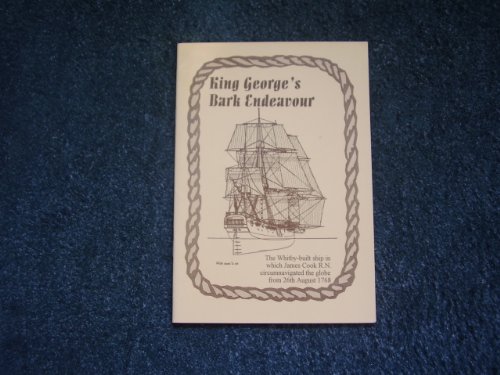
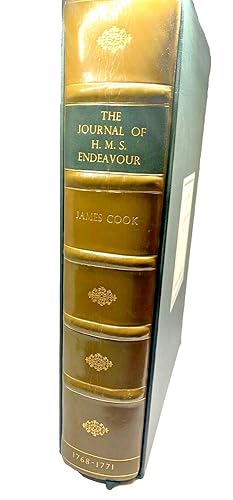
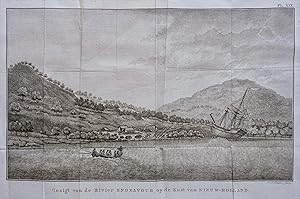
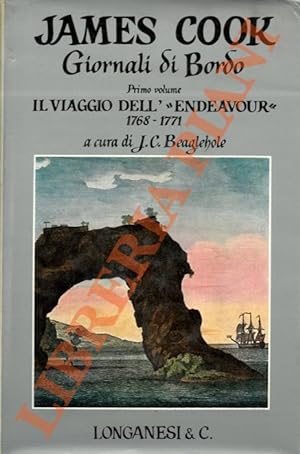
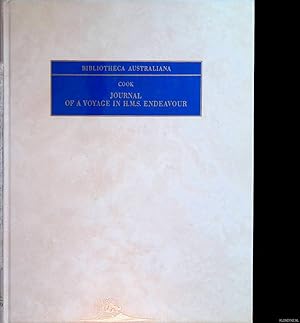
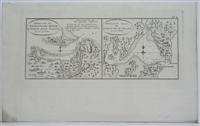

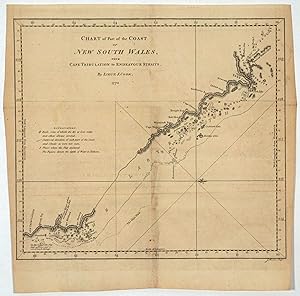



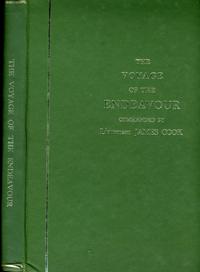
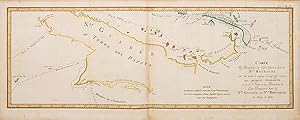



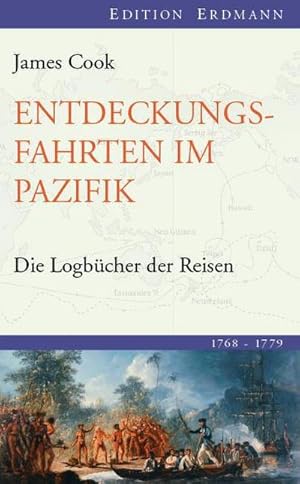
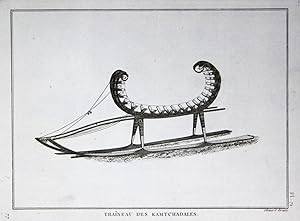
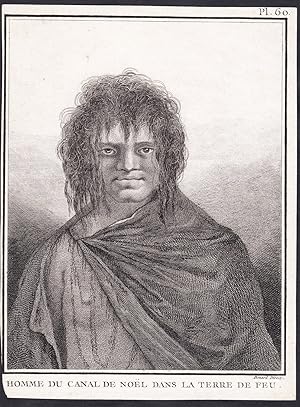
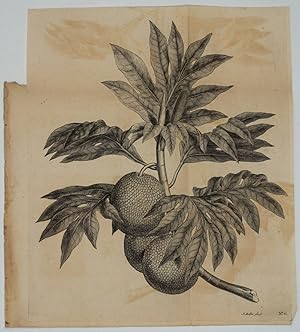
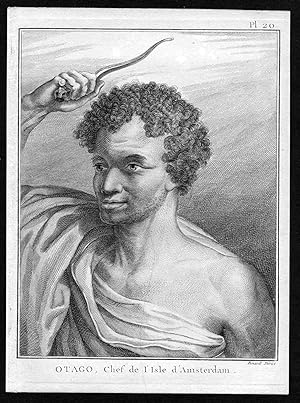
![Bild des Verkäufers für The Method taken for preserving the Health of the Crew of His Majesty's Ship the Resolution during her late Voyage round the World [in] Philosophical Transactions, of the Royal Society of London. Vol. LXVI. For the Year 1776. Part I [-II] zum Verkauf von Hordern House Rare Books](https://pictures.abebooks.com/inventory/md/md31293175192.jpg)
